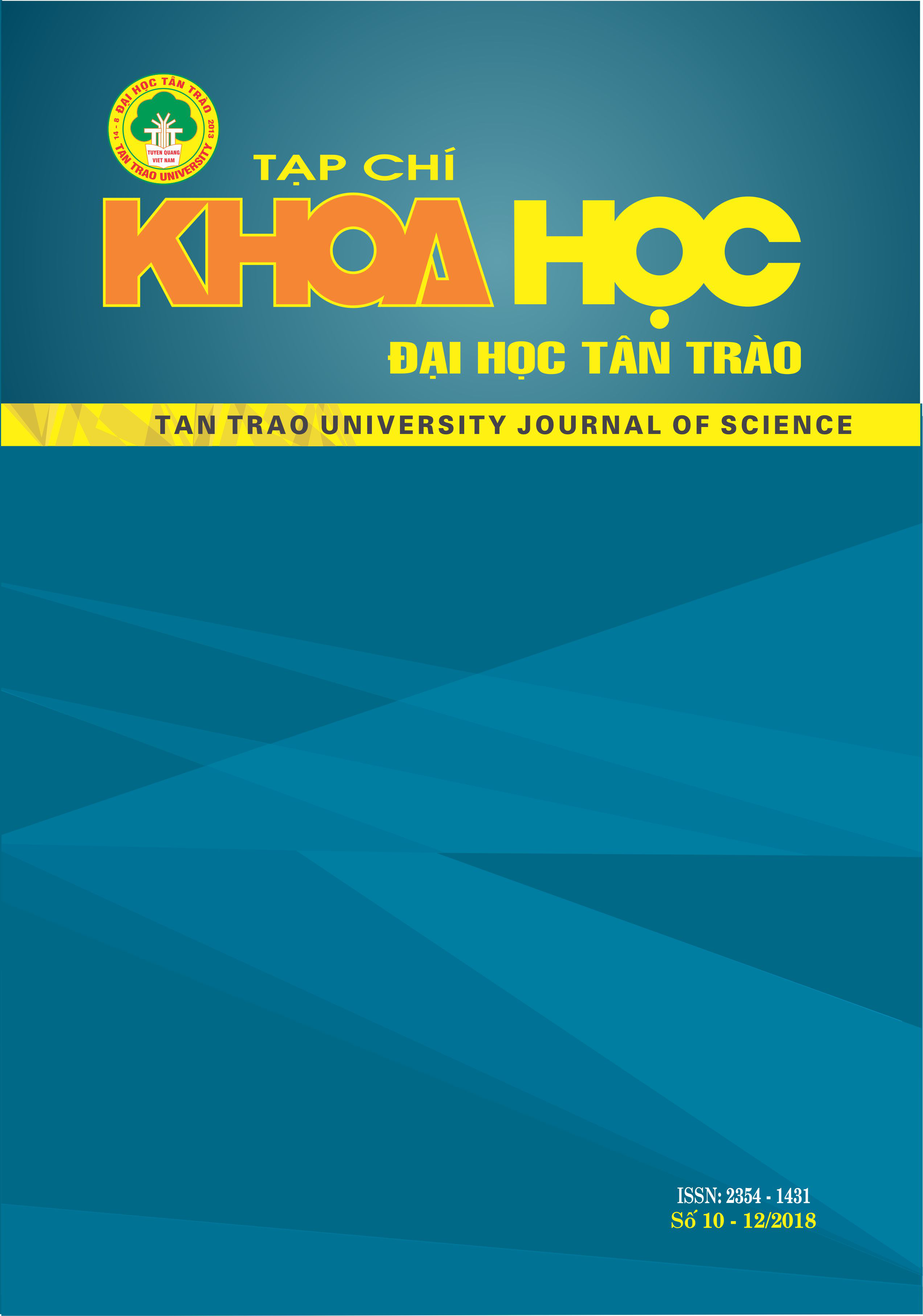Dấu ấn văn hóa Lào trong tiểu thuyết “Đất cánh đồng chum” của Trịnh Thanh Phong
DOI:
https://doi.org/10.51453/2354-1431/2018/194Từ khóa:
Tiểu thuyết Trịnh Thanh Phong; Äất cánh đồng Chum; Dấu ấn văn hóa Là oTóm tắt
Nhà văn Trịnh Thanh Phong là một trong những cây bút tiêu biểu của nền văn xuôi Tuyên Quang thời kỳ Đổi mới. Ông thuộc thế hệ nhà văn trưởng thành sau 1980 và đặc biệt có nhiều thành tựu vào những năm đầu của thế kỷ XXI. Với 65 năm tuổi đời và ngót 40 năm cầm bút, ông không chỉ đóng góp cho nền văn học Tuyên Quang nói riêng, văn học Việt Nam nói chung về số lượng các tác phẩm (bao gồm đủ các thể loại tiểu thuyết, truyện ngắn, bút ký, thơ…) mà còn đóng góp nhiều tác phẩm có chất lượng, được ghi nhận bởi nhiều giải thưởng lớn trong và ngoài nước. Đất cánh đồng Chum là cuốn tiểu thuyết đã nhận được giải thưởng Đông Dương – Giải thưởng văn học Sông Mêkông. Đây là giải thưởng về tình hữu nghị ba nước Việt Nam, Lào, Campuchia tại PhNôm Pênh năm 2008. Bài viết, trên cơ sở khái quát một vài nét về cuộc đời, văn nghiệp của Trịnh Thanh Phong và nét đẹp của văn hóa Lào, từ đó chỉ ra những nét văn hóa Lào đặc sắc trong tiểu thuyết Đất cánh đồng Chum.
Tải xuống
Tài liệu tham khảo
1. Trinh Thanh Phong (2014), Childhood Days, Long story, Kim Dong Publishing House.
2. Trinh Thanh Phong (2007), Plains of Jars, Novel, Writers Association Publishing House.
3. Nguyen Van Thuyet (2009), Reading Novel Plains of Jars by Trinh Thanh Phong, some feelings, Tan Trao Newspaper , Edition No. 49 - 1st Period in May 2009.
4. Tran Huy Van (2013), Plains of Jars - The love song about Vietnam-Laos Battle, Tuyen Quang Literature in Innovation Period (1986 - 2006) - Works and Comments, Thai Nguyen University Publishing House.
Tải xuống
Đã Xuất bản
Cách trích dẫn
Số
Chuyên mục
Giấy phép

Tác phẩm này được cấp phép theo Giấy phép Quốc tế Creative Commons Attribution-ShareAlike 4.0 .
Bài báo được xuất bản ở Tạp chí Khoa học Đại học Tân Trào được cấp phép theo giấy phép Ghi công - Chia sẻ tương tự 4.0 Quốc tế (CC BY-SA). Theo đó, các tác giả khác có thể sao chép, chuyển đổi hay phân phối lại các bài báo này với mục đích hợp pháp trên mọi phương tiện, với điều kiện họ trích dẫn tác giả, Tạp chí Khoa học Đại học Tân Trào và đường link đến bản quyền; nêu rõ các thay đổi đã thực hiện và các nghiên cứu đăng lại được tiến hành theo cùng một bản quyền.
Bản quyền bài báo thuộc về các tác giả, không hạn chế số lượng. Tạp chí Khoa học Tân Trào được cấp giấy phép không độc quyền để xuất bản bài báo với tư cách nhà xuất bản nguồn, kèm theo quyền thương mại để in các bài báo cung cấp cho các thư viện và cá nhân.
Mặc dù các điều khoản của giấy phép CC BY-SA không dành cho các tác giả (với tư cách là người giữ bản quyền của bài báo, họ không bị hạn chế về quyền hạn), khi gửi bài tới Tạp chí Khoa học Đại học Tân Trào, tác giả cần đáp ứng quyền của độc giả, và cần cấp quyền cho bên thứ 3 sử dụng bài báo của họ trong phạm vi của giấy phép.






